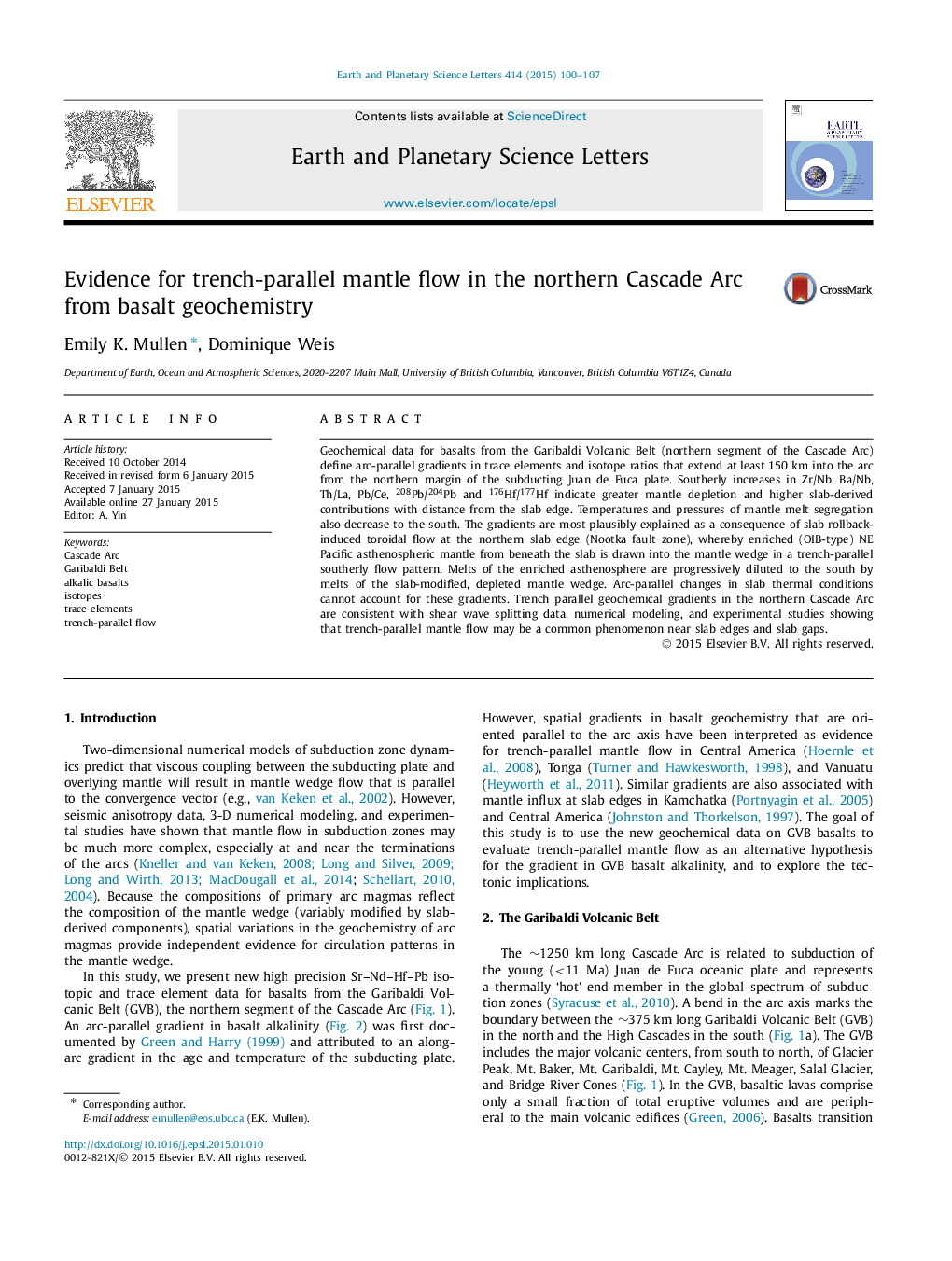| Article ID | Journal | Published Year | Pages | File Type |
|---|---|---|---|---|
| 6428571 | Earth and Planetary Science Letters | 2015 | 8 Pages |
â¢In Cascade Arc, basalt alkalinity increases towards northern edge of subducting slab.â¢Arc-parallel gradients also defined by new Sr-Nd-Hf-Pb isotope & trace element data.â¢Geochemical gradients indicate southerly increases in mantle depletion, slab fluxes.â¢Enriched NE Pacific mantle drawn southward into arc by trench-parallel mantle flow.
Geochemical data for basalts from the Garibaldi Volcanic Belt (northern segment of the Cascade Arc) define arc-parallel gradients in trace elements and isotope ratios that extend at least 150 km into the arc from the northern margin of the subducting Juan de Fuca plate. Southerly increases in Zr/Nb, Ba/Nb, Th/La, Pb/Ce, 208Pb/204Pb and 176Hf/177Hf indicate greater mantle depletion and higher slab-derived contributions with distance from the slab edge. Temperatures and pressures of mantle melt segregation also decrease to the south. The gradients are most plausibly explained as a consequence of slab rollback-induced toroidal flow at the northern slab edge (Nootka fault zone), whereby enriched (OIB-type) NE Pacific asthenospheric mantle from beneath the slab is drawn into the mantle wedge in a trench-parallel southerly flow pattern. Melts of the enriched asthenosphere are progressively diluted to the south by melts of the slab-modified, depleted mantle wedge. Arc-parallel changes in slab thermal conditions cannot account for these gradients. Trench parallel geochemical gradients in the northern Cascade Arc are consistent with shear wave splitting data, numerical modeling, and experimental studies showing that trench-parallel mantle flow may be a common phenomenon near slab edges and slab gaps.
